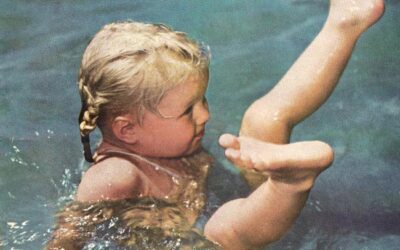Fear and Anxiety in Childhood
By Becky Milstead
Fearfulness is a normal part of any healthy child’s development. Fear is like an extra gear in the engine of growth that helps a child focus their attention and energy on the process of gaining new developmental skills. As a child grows, fears crop up as a child works to master new skills in order give the child energy to master and cope with new experiences. This begins as soon as a baby is born. First, they are afraid of falling and develop the skill of grasping to the parent. Babies who have this skill can then practice being social while safely grasping their parent as they learn about new people such as siblings, grandparents and friends. Once toddling, crawling and walking skills begin, children develop new fears. The skill of moving away from the parent is exciting and it carries with it a world that includes the possibility of separation. A toddler who dissolves into panic is using fear’s engine to practice accepting that possibility into their world. As most of us know, it can take a lifetime!
Once a parent accepts that fear is normal, it is important to learn what a child needs when their growth demands the energy of fearfulness. There are three helpful strategies that tend to be useful – Support, Structure and Stories.
Support
Parental support is vital and life giving to a growing child. Support respects the child’s need for fear to master new growth. Unless there is a safety issue, support that allows the child to struggle is best. Rescuing, hovering and problem solving communicates a lack of confidence to a growing child. It focuses the child’s attention on what the parent can do rather than what the child can learn to do for themselves. A child who is learning to master sleeping alone, starting school, or trying a not to fall apart over a shot in the pediatrician’s office benefits from hearing their parent give validating responses that focus attention on the normalcy of child’s fearfulness. Statements such as, “Starting a new school is scary,” “It makes sense that you are nervous,” or “It is hard to be brave when you need a shot,” are all statements that give the child’s fear space and allow it to belong to the child. When a child does master a new step like sleeping in their own bed, going to school or taking a test, validating responses can be expanded to acknowledge the growth. Statements like, “You are really growing up,” “I bet you felt so proud when you did that,” even a question like “How did it feel to be brave?” focuses the attention on what the child did versus parent focused responses like, “I’m so proud of you.”
Structure
Parents can also add structure to a new skill that generates fear for a child. Structure that breaks new skills up into smaller steps without rescuing can be invaluable to a child struggling with a new task. Bedtime is a common fear that requires increased structure to help a child achieve the ability to sleep through the night in their own bed. Structure could include a bedtime routine like bath, pajamas, brush teeth then a story. For some children, this is enough. Others need to include baby steps towards the independence of sleeping alone such as the parent sitting on the bedside until the child falls asleep for several days, then setting up a chair to progressively sit farther from the bed as the child practices mastering their fear of being alone when they fall asleep. A child who is afraid to ask a teacher for help can practice asking for help at home. A parent may break the skill into baby steps for practice looking someone in the eye, saying excuse me, stating the need and then asking for help. Role play and pretend can add structure or steps to what may otherwise feel like an impossible task to a fearful child.
Stories
Finally, parents can tell stories. Human beings have passed down wisdom, life skills, behavior regulation and knowledge about danger for thousands of years through collective stories such as folktales and myths. A child’s mind is a sponge for new information in narrative form. Parents may not have the benefit of collective narratives any longer, but that does not mean that that they cannot share stories with their children. Parents and grandparents can tell stories about their own childhood fears, how they felt when they mastered them and what they learned about themselves. Sharing in this way will mean far more to a child than any lecture or pep talk. Reading to a child is also a wonderful way to pass on learning about other people’s fears and challenges. Reading universalizes much of the human experience. Growing up is a journey that everyone takes. It is exciting, scary, fulfilling and terrible for all who travel it. Talking about a character in a story allows a type of sharing that invites a child to share their own stories of fear and growth with their parent.
Children with parents who are willing to give to them in these ways are children who are allowed to grow and develop at their own pace. Parents face new developmental tasks too and are on a growth journey along with their children. Unresolved fears from a parent’s childhood can result in excited and anxious responses to the child’s fear. This can reinforce the fear and deepen it beyond a child’s ability to use it for growth. All children borrow courage and confidence from their parents as they struggle to grow. They look to the parent for permission to be young, to be small and to be afraid. It is important that parents have resolved their own feelings about fear and vulnerability. If there is shame or disgust over fears that the parent experienced in childhood, the parent will not be able to join the child in their journey.
If you or your child has become stuck in a story of fearfulness or fears have overwhelmed you or your child, please reach out to a qualified counselor or therapy to get help and learn more.
By Becky Milstead











0 Comments